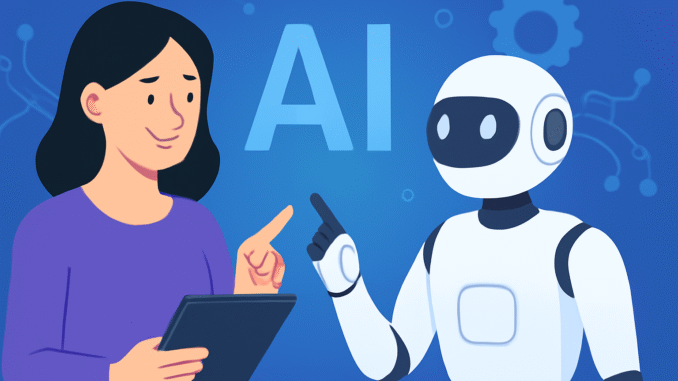
The Future of AI: How Artificial Intelligence is Shaping Tomorrow’s World
Artificial Intelligence (AI) is no longer a futuristic concept or a sci-fi fantasy. It’s an integral part of our daily lives, powering everything from smart assistants like Siri and Alexa to advanced machine learning models that drive innovations in industries such as healthcare, finance, and entertainment. As AI technology continues to evolve at an unprecedented rate, its potential to reshape our world is limitless. But what does the future of AI look like, and how will it continue to transform the way we live, work, and interact?
In this article, we’ll explore the emerging trends, applications, and potential implications of AI in shaping the world of tomorrow.
The Rise of AI: A Brief Overview
AI has experienced significant growth over the past decade, thanks to breakthroughs in deep learning, neural networks, and natural language processing (NLP). These innovations have enabled machines to mimic human-like cognitive processes, such as learning from data, recognizing patterns, and making decisions.
In its current form, AI is already integrated into many aspects of our lives. For instance, recommendation systems on platforms like Netflix or Amazon use AI algorithms to analyze our preferences and suggest content or products. AI-powered chatbots assist customers on websites, and autonomous vehicles are being tested to revolutionize transportation.
But the future of AI is even more promising. As technology advances, AI is expected to become more autonomous, intelligent, and capable of tasks that were once exclusive to humans. Let’s take a closer look at some of the key areas where AI will play a pivotal role in shaping tomorrow’s world.
1. AI and Healthcare: Revolutionizing Medicine
One of the most exciting and impactful areas of AI development is healthcare. AI has the potential to revolutionize the way we diagnose, treat, and manage diseases.
Early Diagnosis and Personalized Treatment
AI-powered diagnostic tools are already being used to identify diseases like cancer, diabetes, and heart disease at earlier stages. Machine learning algorithms can analyze medical images, such as X-rays and MRIs, with remarkable accuracy, helping doctors detect abnormalities that might be overlooked by the human eye.
In the future, AI could even be used to develop personalized treatment plans. By analyzing a patient’s genetic makeup, lifestyle, and medical history, AI can help doctors tailor treatments that are most effective for each individual, leading to better outcomes and fewer side effects.
AI-Driven Drug Discovery
AI is also revolutionizing drug discovery. Traditionally, developing a new drug can take years and cost billions of dollars. AI can expedite this process by predicting how different molecules will interact with the human body, allowing scientists to identify promising drug candidates much faster. This has the potential to reduce the cost and time required for bringing life-saving medications to market.
2. AI in the Workforce: Changing the Nature of Jobs
AI is already having a profound impact on the workforce, and its influence will only continue to grow in the coming years. Automation and machine learning will reshape industries, creating new job opportunities while eliminating others.
Automation of Repetitive Tasks
In many industries, AI is being used to automate repetitive, time-consuming tasks. For example, in manufacturing, robots equipped with AI can handle tasks such as assembly, packaging, and quality control. This frees up human workers to focus on more complex and creative tasks, improving productivity and efficiency.
AI and Job Creation
While concerns about job displacement due to AI are valid, the technology is also creating new job opportunities. Roles like AI specialists, data scientists, and machine learning engineers are in high demand. Additionally, AI will enhance existing jobs by providing workers with powerful tools to improve decision-making and efficiency.
For example, doctors can use AI to analyze patient data, helping them make more accurate diagnoses. Similarly, marketers can leverage AI to create more personalized campaigns, while engineers can use AI to optimize product designs. As AI continues to evolve, its potential to enhance human capabilities will only increase.
3. AI in Autonomous Vehicles: The Future of Transportation
Autonomous vehicles (AVs) represent one of the most anticipated applications of AI. With companies like Tesla, Waymo, and Uber investing heavily in self-driving technology, the future of transportation is set to be transformed.
Safer Roads and Reduced Accidents
One of the most compelling reasons for adopting AI in transportation is its potential to reduce road accidents. Human error is responsible for the vast majority of traffic accidents, but AI-powered autonomous vehicles can make real-time decisions that are faster and more accurate than humans. AVs can also communicate with each other to optimize traffic flow and prevent collisions.
Environmental Benefits
In addition to improving safety, AI-powered autonomous vehicles could help reduce carbon emissions. By optimizing driving routes and improving fuel efficiency, AVs could lead to a significant reduction in the environmental impact of transportation.
4. AI and Smart Cities: Building the Cities of Tomorrow
The concept of smart cities is rapidly gaining traction, and AI will play a central role in creating these futuristic urban environments. A smart city uses digital technologies to enhance performance, well-being, and reduce costs & resource consumption across the city.
Efficient Resource Management
AI can help cities manage resources more efficiently. For example, AI-powered systems can optimize traffic flow, reduce energy consumption, and improve waste management. By analyzing data from sensors and cameras placed throughout the city, AI can predict and address issues before they become problems.
Enhancing Public Safety
AI can also enhance public safety in smart cities. Surveillance systems powered by AI can detect suspicious behavior, identify potential threats, and alert authorities in real-time. Additionally, AI can be used in emergency response systems to prioritize calls and dispatch resources more effectively.
5. AI in Education: Personalized Learning for All
AI has the potential to transform education by providing personalized learning experiences for students. As AI continues to evolve, it could lead to more effective teaching methods, helping students learn at their own pace and according to their individual needs.
Adaptive Learning Systems
AI-powered adaptive learning systems can analyze a student’s performance in real-time and adjust the curriculum to fit their learning style. This personalized approach can help students who struggle with certain subjects and challenge those who excel.
Virtual Classrooms and AI Tutors
AI-powered virtual classrooms and tutors are also on the horizon. These tools could provide students with access to high-quality education regardless of their location. AI tutors could offer additional support to students, answering questions and providing feedback on assignments, helping to bridge the gap between traditional classroom instruction and individualized learning.
6. Ethical Considerations and Challenges
While the future of AI is exciting, it also comes with significant ethical considerations and challenges. As AI becomes more powerful, questions around privacy, accountability, and bias become increasingly important.
Privacy and Data Security
AI systems rely on vast amounts of data to function, raising concerns about how that data is collected, stored, and used. Ensuring that AI systems respect user privacy and protect sensitive data will be essential for building trust in the technology.
Addressing Bias in AI
AI systems are only as good as the data they are trained on. If the data is biased, the AI system will also be biased. Addressing bias in AI algorithms is crucial to ensure fairness and equality in AI applications, particularly in areas like hiring, lending, and law enforcement.
Regulation and Accountability
As AI becomes more autonomous, determining who is responsible for its actions will be a critical issue. Governments, businesses, and tech developers will need to collaborate to establish regulations and guidelines that ensure AI is used ethically and responsibly.
Conclusion: Embracing the AI-Driven Future
The future of AI holds incredible promise, with the potential to revolutionize industries, improve our quality of life, and solve some of the world’s most pressing challenges. From healthcare to education, transportation to smart cities, AI is shaping tomorrow’s world in ways we are just beginning to understand.
However, with great power comes great responsibility. As we move toward an AI-driven future, it’s essential that we address the ethical and societal challenges that come with these advancements. By embracing AI while ensuring its responsible development and deployment, we can harness its potential to create a better, smarter, and more equitable world.
